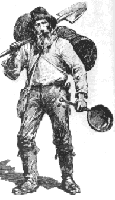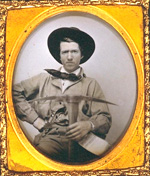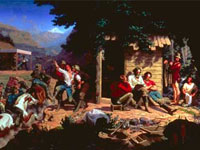Old Sacramento State Historic Park [CA]
Old Sacramento State Historic Park is a cluster of noteworthy, early Gold Rush commercial structures. Historic buildings include the 1849 Eagle Theater; the 1853 B. F. Hastings Building, once home to the California Supreme Court; and the 1855 Big Four Building. Old Sacramento's historical significance comes from it being the western terminus of the Pony Express postal system, the first transcontinental railroad, and the transcontinental telegraph. With over 50 historic buildings, Old Sacramento has more buildings of historic value in its 28 acres than any area of similar size in the West.
A second website for the park can be found here.
The park offers exhibits, tours, educational programs, living history programs and events, and other educational and recreational events.


